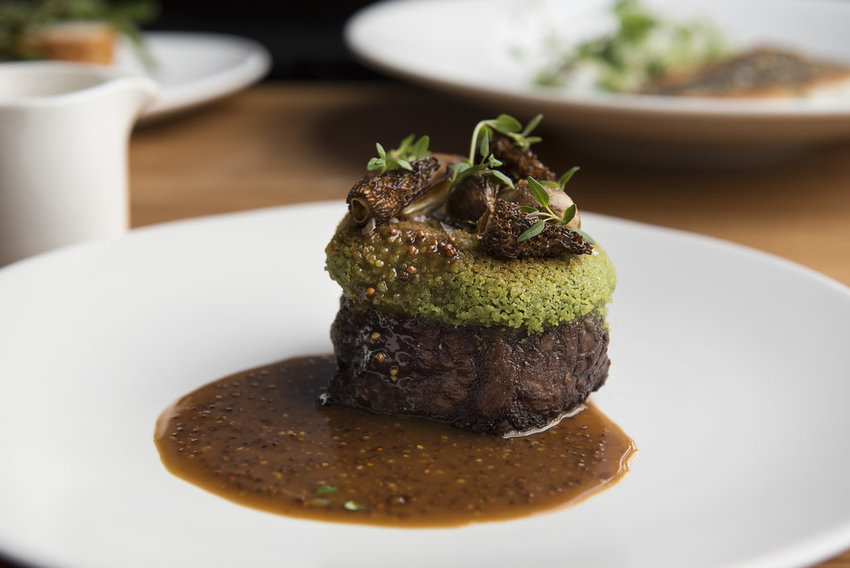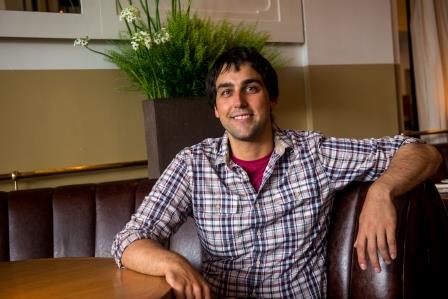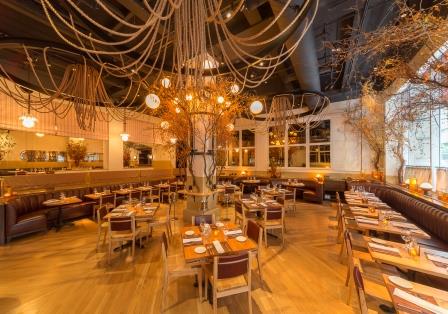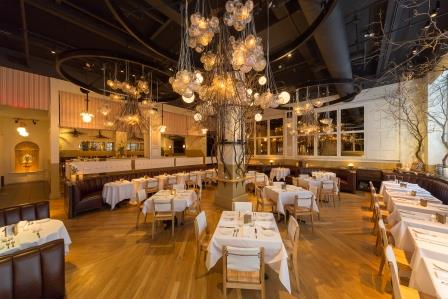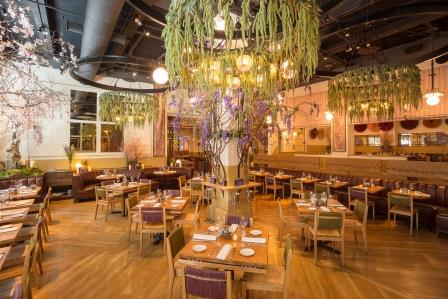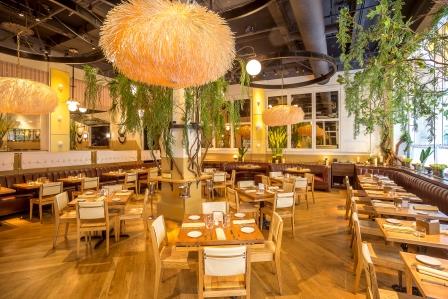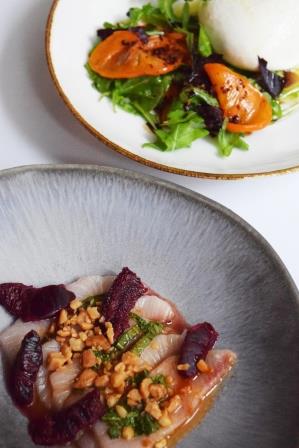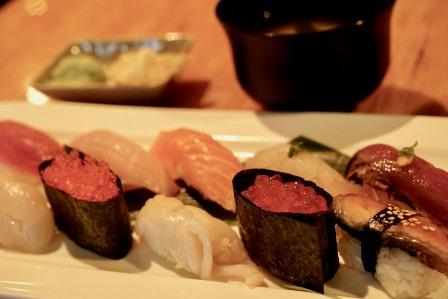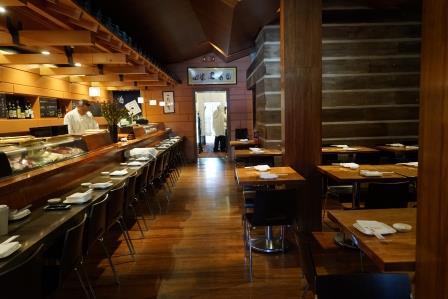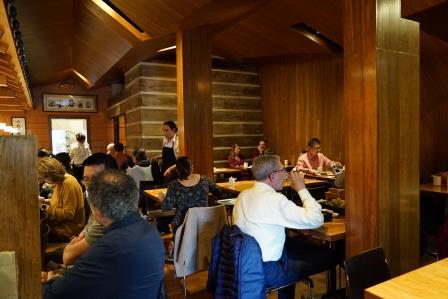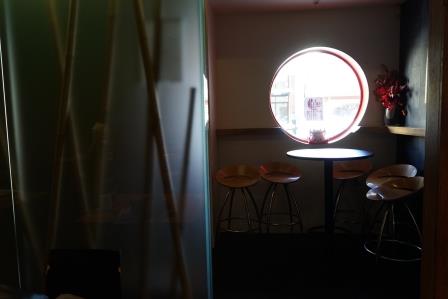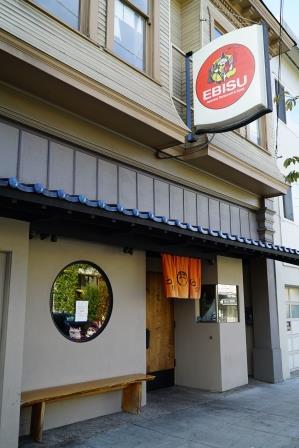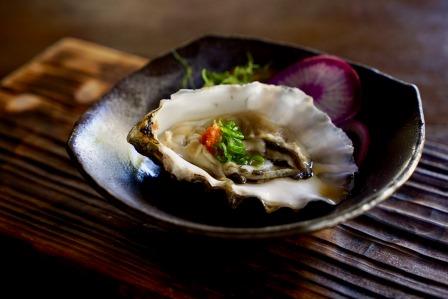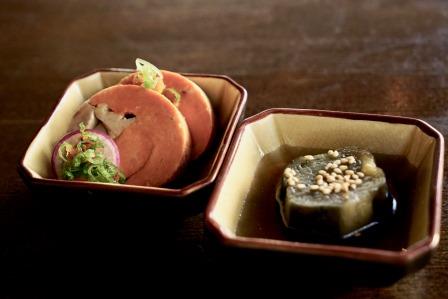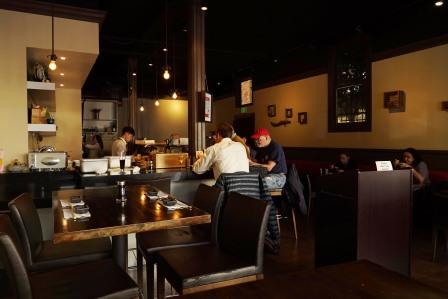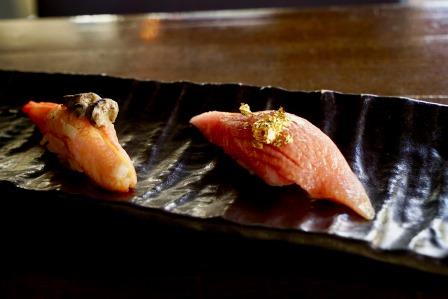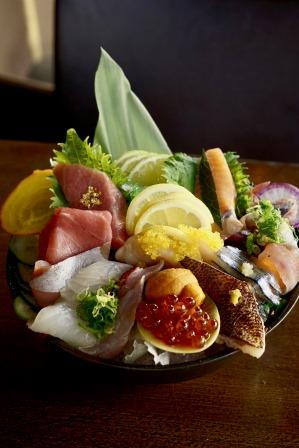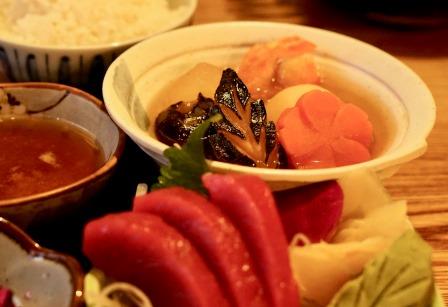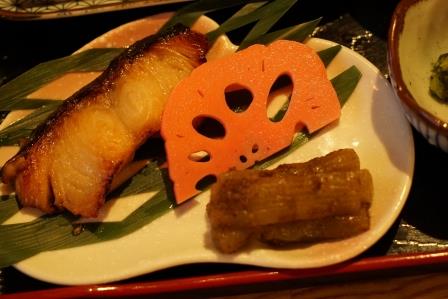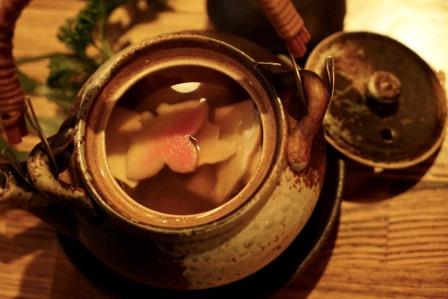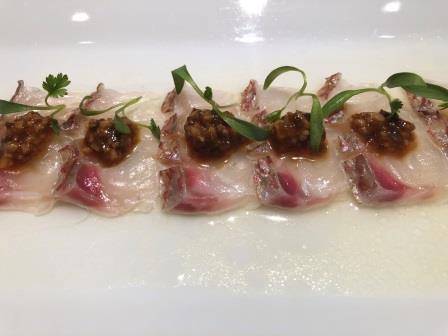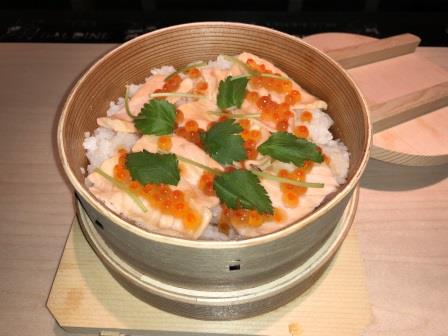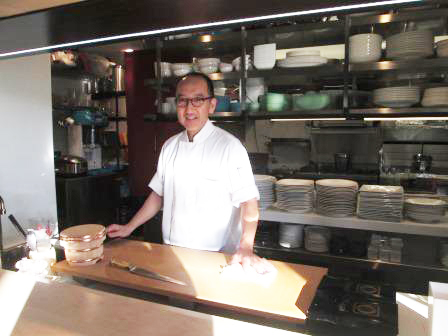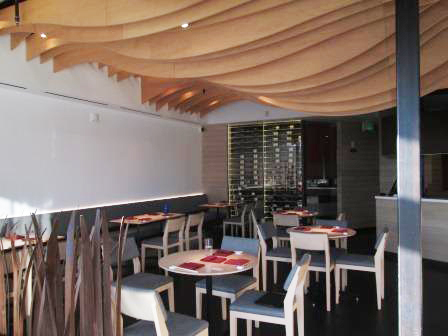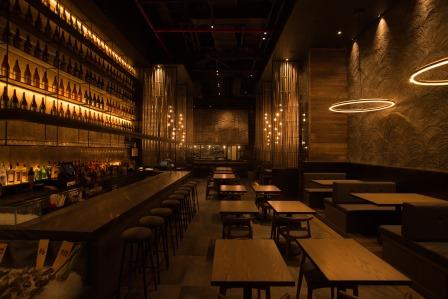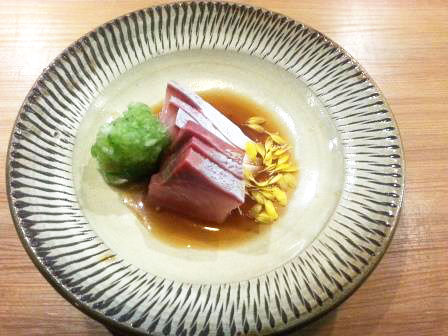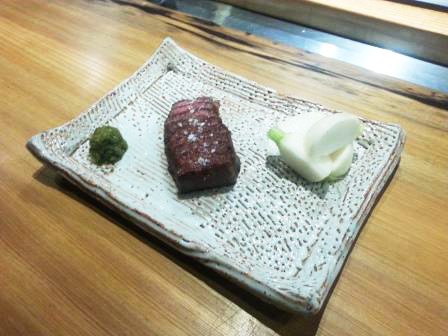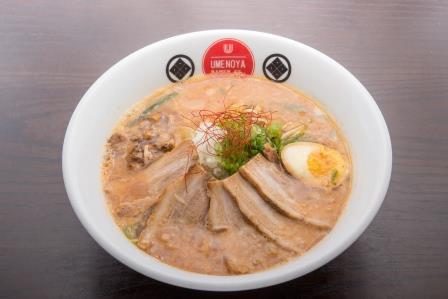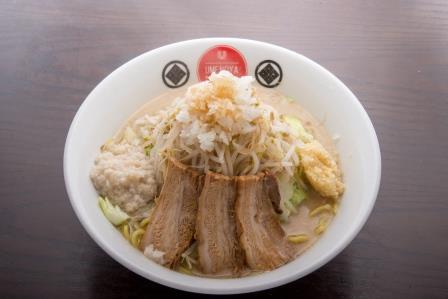Park Avenue /Autumn, Summer, Winter, Spring -Restaurant to be renewed entirely at every change of the season-
By Aya Ota
Park Avenue” is a restaurant which has the theme, changes of four seasons. At every change of the season from autumn, winter, spring, to summer, its menu, its interior decorations, and even its staff uniforms get renewed, and the name of the restaurant also changes to “Park Avenue Autumn”, “Park Avenue Winter”, “Park Avenue Spring”, or “Park Avenue Summer”, and the sign gets changed accordingly.
This innovative idea of renewing the entire restaurant according to the image of the current season frequently became the topic of conversation, which led this place to win numerous awards in the past.
This restaurant has been loved by New Yorkers for a long time. It was operated for 22 years on the Upper East Side since its 1992 opening before it moved to the present location about 5 years ago. The concept for the menu is contemporary American. Ingredients from all over the world are creatively arranged in the dishes. The person who created the basic principles of the menu is Craig Koketsu, the former executive chef, who has now the role of both chef and partner. He is a third-generation Japanese American, and his last name, Koketsu, is Japanese. It may be the reason why he uses so many Japanunique food ingredients in his dishes.
The present executive chef is Zene Flinn. was born and raised in the Quincy District of Washington State where agriculture is the main industry. His father was an apple grower there. He grew up surrounded by seasonal fresh ingredients, which inspired him naturally to seek a career in cooking. After graduating from the well-known culinary school, “French Culinary Institute (presently called International Culinary Center)”, he built up his career at “Nougatine” run by Jean-Georges, who is a top leading French chef in New York. He joined the “Quality Branded Group” which developed 10 restaurants in New York, Miami, and Denver including this “Park Avenue” in 2010.
Flinn’s dishes represent his full love for the ingredients, and are superbly creative. He uses a wide variety of Japanese ingredients that include miso, mirin, yuzu juice, yuzu kosho, shirodashi, wasabi, sansho, umeboshi, etc. Soy sauce and miso are often used as a secret seasoning to enhance, deepen, or soften the taste. Yuzu, red pepper, and sansho are used to accentuate dishes by contributing to the impression for the first bite, or for visual effects. The surprising combinations of ingredients are something only a non-Japanese could think of, and are excellently balanced. Their concept, in which the changes of each of the four seasons is valued, is somewhat common to what Japanese cuisine is. In the summer of 2018, Flinn was invited by the Niigata Prefecture Government, and visited its local farms and producers, and was deeply impressed by the Japanese food ingredients, and learned a lot about them. Just recently, in January of this year, he impressed industry people at a reception held by the Governor of Niigata by creating and serving brand-new dishes, in which he used Niigata-made soy sauce, Kanzuri (fermented red pepper seasoning), and miso in Italian, Mexican, and Spanish style dishes.
One of the charms of this restaurant is its size. There are 220 seats in the main dining space alone. Additionally, there are 4 private spaces for event use, on which they like to put a special value. All those 4 spaces combined can accommodate parties of 200 people if sitting, and 300 if standing. In the eventful holiday season, they sometimes have as many as 1000 people a day.
This is definitely the kind of restaurant you would like to visit at every season - Autumn, Winter, Spring, or Summer - to enjoy each season of New York through all 5 of your senses.
四季が移るごとにレストラン全体を一新
『パークアベニュー/オータム、ウィンター、スプリング、サマー』
四季の変化をテーマした店『パークアベニュー』。秋、冬、春、夏…と季節が移るごとに、メニューや内装、従業員のユニフォームまで一新し、店名も『パークアベニュー・オータム』、『パークアベニュー・ウィンター』、『パークアベニュー・スプリング』、『パークアベニュー・サマー』と変え、もちろん看板も一新する。この「四季をイメージしてレストラン全体を一新する」という斬新なアイデアは話題となり、過去に数々の賞を受賞している。
同店は、1992年創業以来、約22年間アッパーイーストサイド地区で営業した後に移転、現在の場所で再開して約5年になり、長きにわたりニューヨーカー愛されている店だ。料理のコンセプトは、コンテンポラリー・アメリカン。世界各国の食材を取り入れた、創意工夫に富んだ料理が並ぶ。同店の基本方針を作ったのは、前料理長で現在はシェフ&パートナーを務めるクレイグ・コウケツ氏。日系アメリカ人三世で「纐纈(コウケツ)」は日本の名字。その影響もあってか、日本食材を多く取り入れているのも特徴的だ。
現在、料理長として腕を振るうのは、ジーン・フリン氏。フリン氏はワシントン州クインシー地区の農業がさかんな地域で生まれ育ち、父親もリンゴ栽培をしていた。幼少の頃から、四季折々の旬の素材に触れて育ち、料理への関心を深め、シェフの道を志したのはごく自然なことだった。料理の名門校『フレンチ・カリナリー・インスティテュート(現インターナショナル・カリナリー・センター)』を卒業後、ニューヨークを代表するフレンチシェフ、ジャン・ジョルジュル氏が経営する『ヌガティーン』で修行を積む。『パーク・アベニュー』を含む合計10店舗のレストランをニューヨークやマイアミ、デンバーで展開する『クオリティ・ブランディッド・グループ』に入ったのは2010年のことだ。
フリン氏が創り出す料理は、食材への愛にあふれており、かつ独創性にも優れている。日本食材としては、味噌、みりん、柚子果汁、柚胡椒、白出汁、ワサビ、山椒、梅干し…など、幅広く取り入れている。醤油や味噌は隠し味として使うことも多く、料理の味をまろやかに奥深く広げてくれる。柚や辛子調味料、山椒などは料理のアクセントに活用し、口に運んだ瞬間の印象や見た目の華やかさを創り出す。日本人では思いつかないような、意外な食材同士を組み合わせ、見事な調和を創り出している。四季の変化を大事にするというコンセプトは、和食にも通じるところがある。 フリン氏は、2018年夏に、新潟県の招聘で農家や生産者を訪問、日本産食材の素晴らしさに感銘を受け、理解を深めたという。今年1月には、新潟県知事が主催したレセプションで、新潟産の醤油やかんずり(発酵辛子調味料)、味噌を、イタリアンやメキシカン、スパニッシュスタイルと組み合わせ、全く新しい料理を創り出し、業界人をうならせたばかりだ。
同店の醍醐味はレストランの規模感にもある。座席数はメイン・ダイニングだけで220席。その他、プライベート・イベントに力を入れており、店内に4カ所の専用スペースがある。4つのスペースを合計すると着席で約200、立食で約300もの人数に対応できる。ホリディシーズンでイベントが多い時期には一日1000人以上の来客があることもあるという。
秋、冬、春、夏、すべての季節に訪れ、五感を通してニューヨークの四季を満喫したい…そんなレストランだ。
Park Avenue /Autumn, Summer, Winter, Spring
360 Park Avenue South
New York, NY 10010
Tel: 212-951-7111
URL: www.parkavenyc.com
Mon – Thurs 11:30 am – 10 pm
Fri 11:30am – 11pm
Sat 11am-3pm, 5pm – 11pm
Sun 11am-3pm, 5:30-9:00 pm
Park Avenue” is a restaurant which has the theme, changes of four seasons. At every change of the season from autumn, winter, spring, to summer, its menu, its interior decorations, and even its staff uniforms get renewed, and the name of the restaurant also changes to “Park Avenue Autumn”, “Park Avenue Winter”, “Park Avenue Spring”, or “Park Avenue Summer”, and the sign gets changed accordingly.
This innovative idea of renewing the entire restaurant according to the image of the current season frequently became the topic of conversation, which led this place to win numerous awards in the past.
This restaurant has been loved by New Yorkers for a long time. It was operated for 22 years on the Upper East Side since its 1992 opening before it moved to the present location about 5 years ago. The concept for the menu is contemporary American. Ingredients from all over the world are creatively arranged in the dishes. The person who created the basic principles of the menu is Craig Koketsu, the former executive chef, who has now the role of both chef and partner. He is a third-generation Japanese American, and his last name, Koketsu, is Japanese. It may be the reason why he uses so many Japanunique food ingredients in his dishes.
The present executive chef is Zene Flinn. was born and raised in the Quincy District of Washington State where agriculture is the main industry. His father was an apple grower there. He grew up surrounded by seasonal fresh ingredients, which inspired him naturally to seek a career in cooking. After graduating from the well-known culinary school, “French Culinary Institute (presently called International Culinary Center)”, he built up his career at “Nougatine” run by Jean-Georges, who is a top leading French chef in New York. He joined the “Quality Branded Group” which developed 10 restaurants in New York, Miami, and Denver including this “Park Avenue” in 2010.
Flinn’s dishes represent his full love for the ingredients, and are superbly creative. He uses a wide variety of Japanese ingredients that include miso, mirin, yuzu juice, yuzu kosho, shirodashi, wasabi, sansho, umeboshi, etc. Soy sauce and miso are often used as a secret seasoning to enhance, deepen, or soften the taste. Yuzu, red pepper, and sansho are used to accentuate dishes by contributing to the impression for the first bite, or for visual effects. The surprising combinations of ingredients are something only a non-Japanese could think of, and are excellently balanced. Their concept, in which the changes of each of the four seasons is valued, is somewhat common to what Japanese cuisine is. In the summer of 2018, Flinn was invited by the Niigata Prefecture Government, and visited its local farms and producers, and was deeply impressed by the Japanese food ingredients, and learned a lot about them. Just recently, in January of this year, he impressed industry people at a reception held by the Governor of Niigata by creating and serving brand-new dishes, in which he used Niigata-made soy sauce, Kanzuri (fermented red pepper seasoning), and miso in Italian, Mexican, and Spanish style dishes.
One of the charms of this restaurant is its size. There are 220 seats in the main dining space alone. Additionally, there are 4 private spaces for event use, on which they like to put a special value. All those 4 spaces combined can accommodate parties of 200 people if sitting, and 300 if standing. In the eventful holiday season, they sometimes have as many as 1000 people a day.
This is definitely the kind of restaurant you would like to visit at every season - Autumn, Winter, Spring, or Summer - to enjoy each season of New York through all 5 of your senses.
四季が移るごとにレストラン全体を一新
『パークアベニュー/オータム、ウィンター、スプリング、サマー』
四季の変化をテーマした店『パークアベニュー』。秋、冬、春、夏…と季節が移るごとに、メニューや内装、従業員のユニフォームまで一新し、店名も『パークアベニュー・オータム』、『パークアベニュー・ウィンター』、『パークアベニュー・スプリング』、『パークアベニュー・サマー』と変え、もちろん看板も一新する。この「四季をイメージしてレストラン全体を一新する」という斬新なアイデアは話題となり、過去に数々の賞を受賞している。
同店は、1992年創業以来、約22年間アッパーイーストサイド地区で営業した後に移転、現在の場所で再開して約5年になり、長きにわたりニューヨーカー愛されている店だ。料理のコンセプトは、コンテンポラリー・アメリカン。世界各国の食材を取り入れた、創意工夫に富んだ料理が並ぶ。同店の基本方針を作ったのは、前料理長で現在はシェフ&パートナーを務めるクレイグ・コウケツ氏。日系アメリカ人三世で「纐纈(コウケツ)」は日本の名字。その影響もあってか、日本食材を多く取り入れているのも特徴的だ。
現在、料理長として腕を振るうのは、ジーン・フリン氏。フリン氏はワシントン州クインシー地区の農業がさかんな地域で生まれ育ち、父親もリンゴ栽培をしていた。幼少の頃から、四季折々の旬の素材に触れて育ち、料理への関心を深め、シェフの道を志したのはごく自然なことだった。料理の名門校『フレンチ・カリナリー・インスティテュート(現インターナショナル・カリナリー・センター)』を卒業後、ニューヨークを代表するフレンチシェフ、ジャン・ジョルジュル氏が経営する『ヌガティーン』で修行を積む。『パーク・アベニュー』を含む合計10店舗のレストランをニューヨークやマイアミ、デンバーで展開する『クオリティ・ブランディッド・グループ』に入ったのは2010年のことだ。
フリン氏が創り出す料理は、食材への愛にあふれており、かつ独創性にも優れている。日本食材としては、味噌、みりん、柚子果汁、柚胡椒、白出汁、ワサビ、山椒、梅干し…など、幅広く取り入れている。醤油や味噌は隠し味として使うことも多く、料理の味をまろやかに奥深く広げてくれる。柚や辛子調味料、山椒などは料理のアクセントに活用し、口に運んだ瞬間の印象や見た目の華やかさを創り出す。日本人では思いつかないような、意外な食材同士を組み合わせ、見事な調和を創り出している。四季の変化を大事にするというコンセプトは、和食にも通じるところがある。 フリン氏は、2018年夏に、新潟県の招聘で農家や生産者を訪問、日本産食材の素晴らしさに感銘を受け、理解を深めたという。今年1月には、新潟県知事が主催したレセプションで、新潟産の醤油やかんずり(発酵辛子調味料)、味噌を、イタリアンやメキシカン、スパニッシュスタイルと組み合わせ、全く新しい料理を創り出し、業界人をうならせたばかりだ。
同店の醍醐味はレストランの規模感にもある。座席数はメイン・ダイニングだけで220席。その他、プライベート・イベントに力を入れており、店内に4カ所の専用スペースがある。4つのスペースを合計すると着席で約200、立食で約300もの人数に対応できる。ホリディシーズンでイベントが多い時期には一日1000人以上の来客があることもあるという。
秋、冬、春、夏、すべての季節に訪れ、五感を通してニューヨークの四季を満喫したい…そんなレストランだ。
Park Avenue /Autumn, Summer, Winter, Spring
360 Park Avenue South
New York, NY 10010
Tel: 212-951-7111
URL: www.parkavenyc.com
Mon – Thurs 11:30 am – 10 pm
Fri 11:30am – 11pm
Sat 11am-3pm, 5pm – 11pm
Sun 11am-3pm, 5:30-9:00 pm







